- Updated On: June 19, 2025
Solar Panel Mount: What You Need to Know for Maximum System Efficiency
In the recent past, with the technological advancement of solar, methods of mounting solar panels are also changing. Solar panel roof mounting solutions are now available for roof types like standing seam metal, clay tile, asphalt shingle, etc. Module clamps, mounting rails, and roof attachments with or without flashing are the components of modern solar mounting systems. With these products, solar panel installers can easily and quickly install solar panels that will last for decades without causing any leakage or damage to the materials on the roof.

In this article, we will do an in-depth analysis of solar panel mounting options and the major solar mount components. Also, we will highlight some tips to consider before choosing solar racking and mounting.
What is solar panel mounting and racking?
You can install solar on various surfaces, like your roof or yard, using a solar racking system. Solar firms use racking systems for protecting equipment throughout the solar installation process. Solar racking is usually made of aluminum. It’s light yet strong in comparison to other materials, making it ideal for rooftop solar installation. To ensure maximum solar energy output, mounting enables the panels to be angled at optimal levels, depending on latitude, season, or even time of day.
Using a solar panel mounting bracket is the most popular method for mounting modules. Brackets are heavy-duty equipment, constructed of aluminum or stainless steel. Solar mounting and racking products, regardless of roof or ground mounting, must be NEC Solar Code 2023 compliant to ensure durability and structural integrity to withstand high winds and weather.
What are the major solar mounting components?
Not all racking systems are the same, but there are several components in most solar racking solutions:
Flashings:
Solar panel installation on a roof requires drilling holes that may leak if not sufficiently covered. A thin, rectangular piece of aluminum sheeting called flashing prevents water from leaking through your roof. Under shingles on a traditional asphalt tile roof, the installer will place flashing. For roofs composed of wood, rubber, metal, or tile, the solar company utilizes flashings that are specifically designed to fit the particular curve of your roofing material. Explore best roofs for solar!
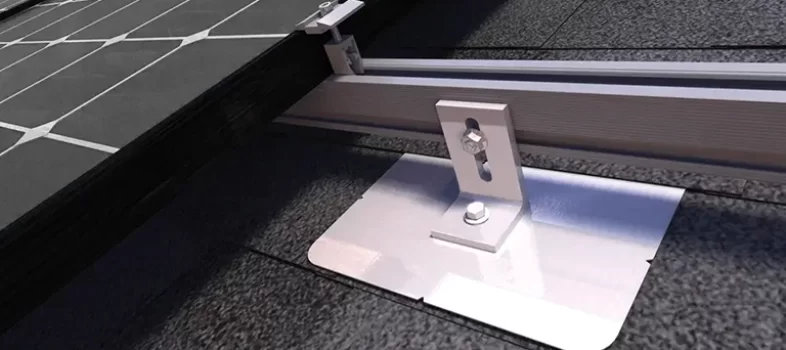
Mounts:
Solar panel mounts hold the system to your roof. Mounts are also known as “feet.” They are commonly attached to the roof with a bolt that passes through the flashing and into a rafter. Different racking systems use a variety of solar mounts. To make sure your rafters are structurally sound and positioned correctly to support the mounts for your solar panel system, solar installers must have access to your attic or the bottom of your roof during their first site visit.
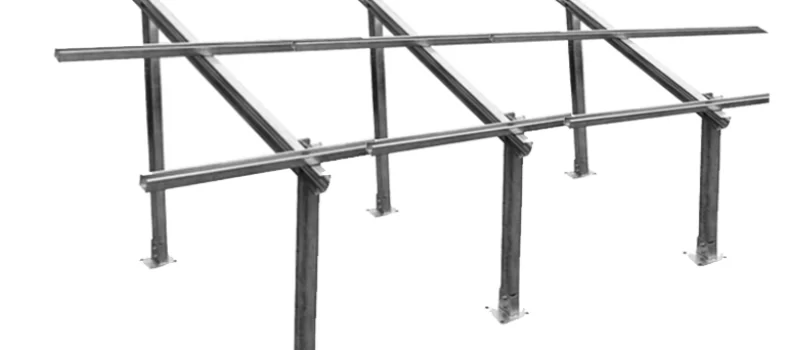
Rails:
In solar racking, rails are the part that your solar panels lay directly on your roof. They are usually long aluminum rails that are positioned either horizontally or vertically. Standard rails have different configurations, including shared-rail and rail-less. Another advantage of rails is that they offer a clean path for your solar panel system’s wiring, which helps to clear clutter and enhances the installation’s appearance and safety.
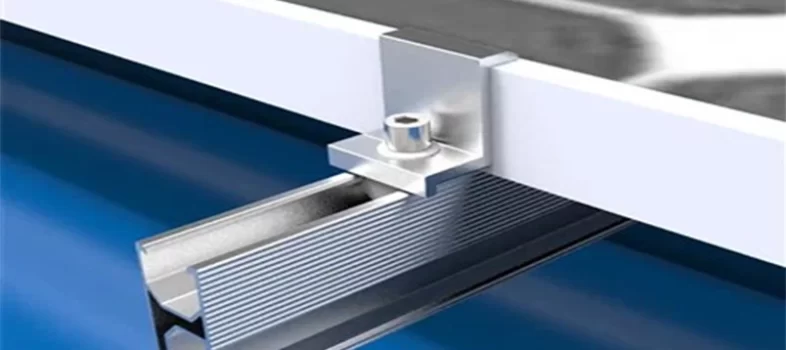
Clamps:
Installers utilize clamps, which connect solar modules to the rails below, to hold solar panels firmly in place on the rack. A good solar installer utilizes both mid-clamps and end-clamps. End clamps are usually larger and fit at the ends of the entire system, whereas mid-clamps are positioned between solar panels and hold them in place on two sides.
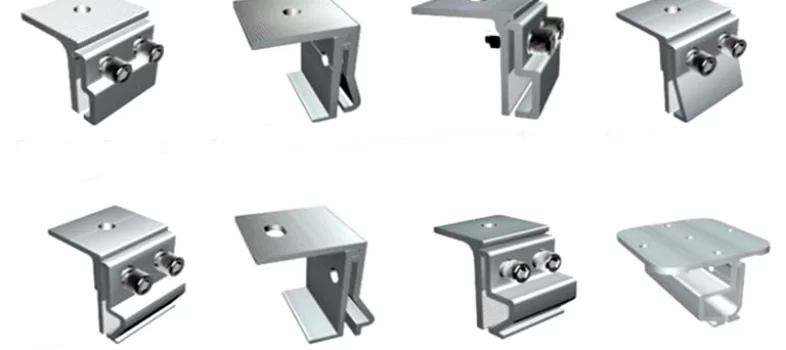
What are the top considerations in a solar mounting system?
Although solar panel mounts are essential for a solar panel system, you shouldn’t worry too much about them because an expert solar installer like Solar SME will use high-quality solar mounting and racking equipment. Here are some important factors to think about:
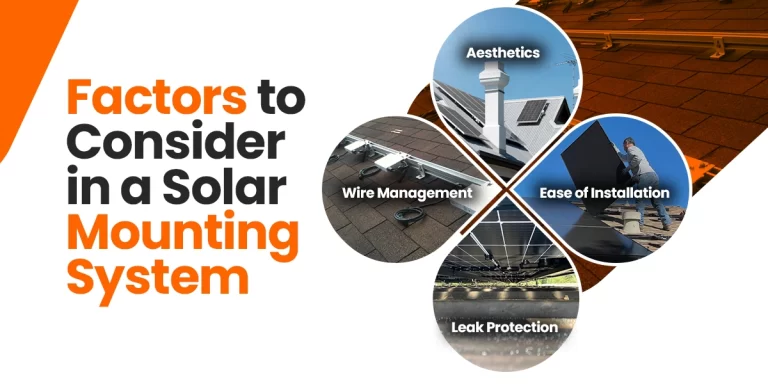
Aesthetics:
Some parts of your mounting system may be visible. It’s worthwhile to ask your solar installer about each component of the racking system and which portions will be visible on your rooftop. Many installers can also show you images or videos of previous installations so you can see how the suggested mounting method appears in actual situations.
Leak Protection:
When comparing solar companies, it’s a good idea to find out what kind of flashing they recommend for your roof, how experienced they are in installing it, and if they have handled product leak service calls. Ask them about their warranties and also the racking company warranty for roof penetrations.
Wire Management:
An essential element in every solar installation is wire management. It entails positioning, safeguarding, and securing the electrical configuration of your solar energy system. Your solar panel system’s performance may be impacted by worn-out and failing wires that are overly tight, exposed to the elements, or inadequately insulated.
Moreover, the longevity of your system and maintenance expenses may also vary by wire management. Reputable solar installers like SolarSME, Inc. make sure that these cables are aesthetically pleasing and positioned on your roof in a reliable, safe location.
Ease of Installation:
While the fundamentals of installing rooftop mounting systems are usually the same, there are some factors that can make the process more challenging or time-consuming. The time of installation may impact by components, the number of individual pieces, and the effort to attach the mounting system to your roof. The cost of your solar system installation may increase with the complexity of the system and the equipment.
Which solar panel mount brands are best?
The top two high-quality solar mounting and racking brands are
- IronRidge
- Unirac
Ironridge:
At first, IronRidge mostly assisted with small-scale off-grid projects. Today, IronRidge is renowned for its durable and unique XR rail series for pitched roofs. Their options for ground mounting and flat roofs are equally reliable.
Unirac:
Unirac offers fixed-tilt ground-mount frames and mounts for flat roofs. The various tilts of Unirac’s solar mounts enable the solar array’s orientation to be independent of the roof’s angle, guaranteeing optimal productivity.
In conclusion, choosing a DIY project can be more difficult. You can’t purchase a solar-ready-made panel mount system. Instead, you need to buy each component individually. The best way to ensure your solar installation goes off without a hitch and uses the proper equipment suited for your specific roof is to work with a licensed solar installer like Solar SME. They will buy the solar panel mounts for you, as they know what will work best with your roof and panels. If you research mount brands and have a preference, you can discuss your options.
Solar SME is a top-tier solar installation company near you offering best solar racking and mounting options with quality and hassle-free installation services. You can get a FREE Quote with our smart solar calculator now!
Related Articles:
Do you consider installing a home solar system in 2025 but your rooftop is not good for solar? Don’t worry! Ground mounted solar panels are the best alternative for you.
As the world strives to reduce carbon emissions, a rise in demand for renewable energy sources can be seen.
Wall mount solar panels are efficient and they are ideal for both residential and public buildings keen on reducing their carbon footprint. Solar panels mounted on walls are emerging as one of the revolutionary and realistic options options in the realm of clean energy. . Solar panels can now be installed straight onto vertical walls. Explore how wall mount solar panels work, their key advantages, and why they represent the next step in the evolution of renewable energy systems



